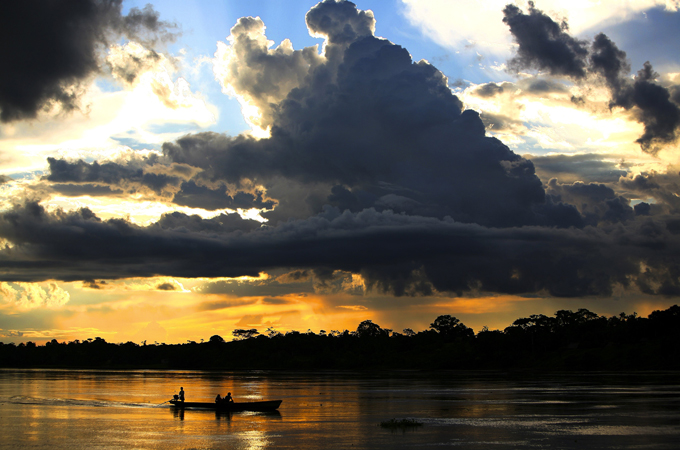‘Huge underground river’ found below Amazon
Brazilian scientists say 6,000km river discovered, but critics say its just a bit of water flowing in underground rocks.
![amazon river [GALLO/GETTY]](/wp-content/uploads/2011/08/2011827175218915427_20.jpeg?resize=570%2C380&quality=80)
 |
|
Research which claims to show the existence of the Hamza River two kilometers below the jungle has not passed peer review, and some scientists say the methodology is deeply flawed [GALLO/GETTY] |
Scientists in Brazil claim to have discovered a massive 6000km river running deep below the Amazon basin, but other researchers think it might just be water trickling through underground rocks.
Known for its rich biodiversity and misty beauty, researchers are now wondering if they have only seen part of the Amazon, since the “discovery” of the underground Hamza River was presented by scientists from Brazil’s National Observatory at a conference last week.
Elizabeth Tavares Pimentel and Valiya Hamza located the river by collecting data samples from temperature variations in 241 abandoned deep wells, drilled in the Amazon by Petrobras, Brazil’s state oil company, in the 1970s and 1980s.
If the river, located between two and four kilometres below the earth’s surface, is as big as the scientists believe, it could be the longest underground river in the world.
“It is kind of fascinating from a scientific point of view,” said Michael Coe, leader of the Amazon programme at the Woods Hole research centre in the US who has studied the area for 12 years. “What we see on the surface is not all that is going on.”
Untraditional river
While massive in size, the underground formation probably holds less than three per cent of the water which flows through the traditional Amazon, Coe said. “It is not a river in the sense of water flowing through a tube; it would be water flowing through porous stones,” he told Al Jazeera. “The lion’s share of the water is still on the surface.”
Jorge Figueiredo, a geologist with Petrobras who has published widely on the Amazon, scoffs when asked if the underground water should be considered a river. “The authors made their conclusion based on the temperature of the rocks, but we have data against this possibility.”
He doesn’t think the discovery was based on sound science. The report came from a presentation at a conference. It did not pass peer review from other scientists in a scholarly journal.
“It seems to be a bit of nonsense work,” Figueiredo said. The variation of temperature, an important part of the researcher’s theory, “can be based on many different things,” he said.
While the Hamza River may be massive, the water running through it moves slowly. About 133,000 cubic metres of water flows through the traditional Amazon each second, while the underground river’s flow rate has been estimated at about 3900 cubic metres per second.
While the Amazon ranges from one kilometer to 100 kilometers in width, the Hamza is much wider, allegedly ranging from 200 to 400km. But the river’s size means it is unlikely to be a continuous flow, Figueiredo said.
Broader implications unclear
“Six thousands kilometres [the apparent length of the river] is almost the width of South America,” Figueiredo told Al Jazeera. Underground rock formations across the contient are not all connected, he said, meaning the chances of one continuous river are unlikely at best. He does not believe the underground water should be considered a river.
Scientists are not sure what the discovery means for broader ecological issues. “This could contribute to slow salinity in near-coastal environments, but I am not sure,” Coe said. If the water is fresh, as some scientists claim, it could affect coastal ecosystems from mangroves to marsh lands. Figueiredo does not think there is any way fresh water could be buried that deep.
Bacteria and other small organisms are likely the only life which could survive in water this far underground, Coe said.
If nothing else the discovery underscores how many important natural resources exist, undiscovered, in the Amazon, said Rafael Cruz, a Greenpeace campaigner in Brazil. “For us, it is a confirmation of how precious the Amazon forest is and how we have to preserve it,” he told Al Jazeera. “The scientific community is going to speak out with this new discovery and it will be important in the whole conservation debate.”